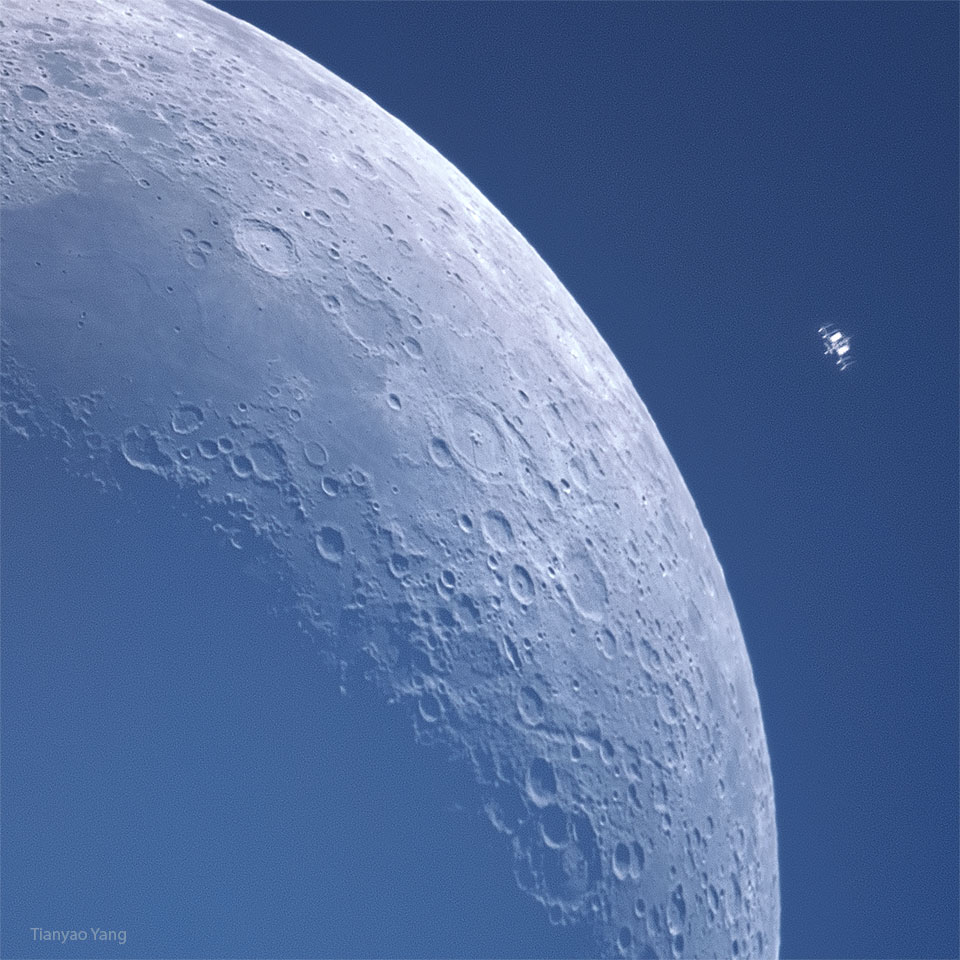2023年6月12日
The Largest Satellites of Earth
Image Credit & Copyright: Tianyao Yang
Explanation: What’s that near the Moon? It’s the International Space Station (ISS). Although the ISS may appear to be physically near the Moon, it is not — it is physically near the Earth. In low Earth orbit and circulating around our big blue marble about every 90 minutes, the ISS was captured photographically as it crossed nearly in front of the Moon. The Moon, itself in a month-long orbit around the Earth, shows a crescent phase as only a curving sliver of its Sun-illuminated half is visible from the Earth. The featured image was taken in late March from Shanghai, China and shows not only details of Earth’s largest human-made satellite, but details of the cratered and barren surface of Earth’s largest natural satellite. Over the next few years, humanity is planning to send more people and machines to the Moon than ever before.
Tomorrow’s picture: another two
地球最大的卫星
影像提供与版权: Tianyao Yang
说明: 在月亮附近的是什么?是国际太空站(ISS)。虽然国际太空站或许看起来就在月亮附近,但事实并非如此,它在空间上较靠近地球。位在近地球轨道上、大约每90分钟绕行蔚蓝地球一圈的国际太空站,拍照时只是恰好通过月亮前方。影像所示的月亮,在绕行地球为期长达一个月的周期轨道上,恰好处在新月阶段,因为从地球看出去只能见到受阳光照耀半面的一弧银白。这幅在今年3月下旬摄于中国上海的主题影像,除了呈现了地球最大的人造卫星之细部结构,更显示了地球最大天然卫星的撞击坑及贫瘠表面之细节。在接下来的数年里,人类规划把比先前还多的人和机器送上月球。
明日的图片: another two



